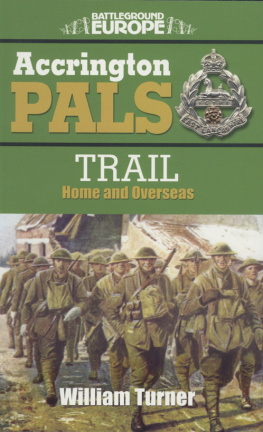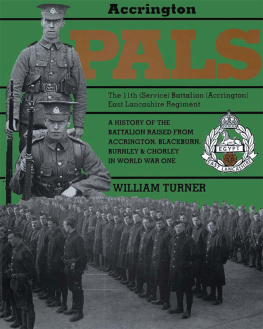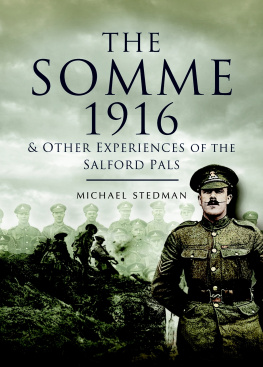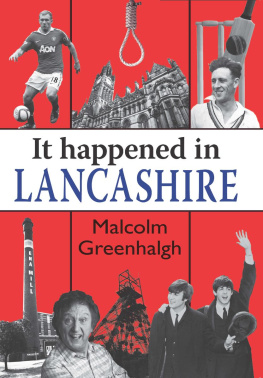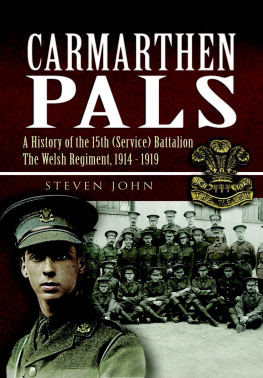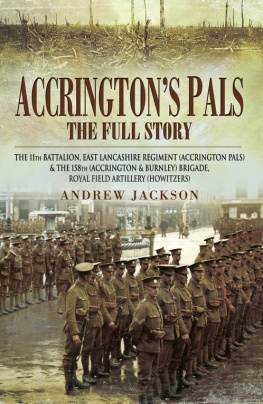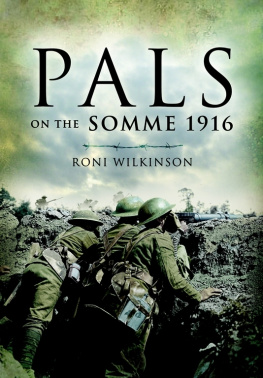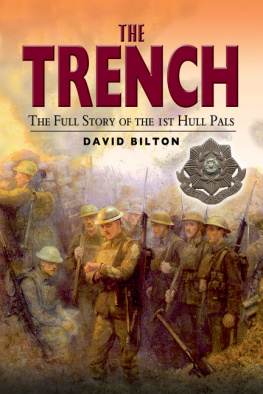Other guides in the Battleground Europe Series:
Ypres - Hill 60by Nigel Cave
Ypres - Sanctuary Wood and Hoogeby Nigel Cave
Ypres - Passchendaele: The Fight for the Villageby Nigel Cave
Ypres - Messines Ridgeby Peter Oldham
Walking the Somme by Paul Reed
Somme - Serreby Jack Horsfall & Nigel Cave
Somme - Beaumont Hamelby Nigel Cave
Somme - Gommecourtby Nigel Cave
Somme - Thiepvalby Michael Stedman
Somme - La Boisselleby Michael Stedman
Somme - Fricourt Mametzby Michael Stedman
Somme - Guillemontby Michael Stedman
Somme - Poziresby Graham Keech
Somme - Courceletteby Paul Reed
Arras - Vimy Ridgeby Nigel Cave
Hindenburg Lineby Peter Oldham
Battleground Europe Series guides in preparation:
Walking the Salientby Paul Reed
Ypres - Polygon Woodby Nigel Cave
Somme - Comblesby Paul Reed
Somme - Delville Woodby Nigel Cave
Somme - Boom Ravineby Trevor Pigeon
Somme - Carnoy-Montaubanby Graham Maddocks
Somme - High Woodby Terry Carter
Boer War - The Relief of Ladysmith, Colenso, Spion Kopby Lewis Childs
Boer War - The Siege of Ladysmithby Lewis Childs
Hindenburg Line - Cambrai: Right Hookby Jack Horsfall & Nigel Cave
Hindenburg Line - Epehyby Bill Mitchinson
Hindenburg Line - Riquevalby Bill Mitchinson
Battleground Europe
ACCRINGTON PALS
TRAIL
William Turner
Series editor
Nigel Cave
LEO COOPER
First published in 1998 by Leo Cooper
and reprinted in 2013 by
PEN & SWORD MILITARY
An imprint of
Pen & Sword Books Ltd
47 Church Street
Barnsley, South Yorkshire
S70 2AS
Copyright William Turner 1998, 2013
ISBN 978 0 85052 636 3
The right of William Turner to be identified as Author of this work has been asserted
by him in accordance with the Copyright, Designs and Patents Act 1988.
A CIP catalogue record for this book is available from the British Library
All rights reserved. No part of this book may be reproduced or transmitted
in any form or by any means, electronic or mechanical including photocopying,
recording or by any information storage and retrieval system,
without permission from the Publisher in writing.
Printed and bound in England
By CPI Group (UK) Ltd, Croydon, CRO 4YY
CONTENTS
For anyone like Bill Turner, to build upon a deservedly recognised achievement must be a satisfying experience. All those who have read and learned from Turners Accrington Pals and its supplement, The Accrington Pals Remembered, will welcome this guide book extension of his lovingly tended field of socio-military history. The authors books ensure that we know something of the local background of the men of the 11th Service Battalion of the East Lancashire Regiment, of their deeds, of the memorials of their collective service, and of where their fallen lie buried or simply commemorated. The reader of this new book will now be taken as a rather special pilgrim tourist in the footsteps of the Accrington Pals on their wartime journeys, with periods in the line, in reserve and at rest, noting what still remains recognisable of what those Lancashire soldiers saw in the second decade of a century now ending.
The story is frequently told in the words of Pals having vivid powers of recall. By this means, on location in the United Kingdom, on troop transport, in Egypt and in France, we find ourselves with the Pals from the formation of the battalion and throughout its service until its last shots were fired.
We were with them on the Somme in front of Serre in July 1916, in Oppy Wood in 1917, again in July, and we learn in detail how Lieutenant Horsfall won his Victoria Cross at Ayette in March 1918. We are also introduced to a much more recent story, one of real fascination. Bill calls this the Pals Industry, and while one recognises the appropriateness of an image of labour, certainly Turners labour, perhaps more appropriate might have been a word conveying the authors dedicated nurturing of societys indebtedness to those men of 1914. East Lancashires debt is clearly established, but by extension, it is our debt too, wherever we may come from, a debt to a whole generation of men who, for a range of reasons, responded positively to their nations call at a time of need.
Bill Turners work, and that of others who have directed their attention towards locally raised units, has been invaluable. This local historian understands the wider scene within which his books are set and not least because of this, he has played a notable part in ensuring that his Pals are understood as men of their time with the perception, values and attitudes of their time. From such an understanding, the respect in which the men of the 11th Service Battalion of the East Lancashire Regiment have always been held, is refurbished here.
Turner has served them well.
Peter Liddle
The placename Accrington is of Saxon origin the place of acorns. From these pastoral days, Accrington, with a variety of spellings, in time became a village of hand-loom weavers, which in 1811 had just over 3,000 inhabitants. In common with many others in Lancashire, the village rapidly expanded throughout the Victorian era into an industrial town, which at the outbreak of war in 1914, had a population of some 45,000.
At that time Accrington was a centre of the Lancashire cotton weaving industry. In the town and in the surrounding small townships there were also calico printing works, collieries, brickworks, textile engineering works and iron foundries.
The whole area was a centre of heavy industry. For example, the industrial township of Church, with a population of 6,888 in an area of only 528 acres (214 hectares) had printing and dye works, iron foundries, cotton mills, collieries, naptha distilleries and chemical works within its boundaries. (Thus Church, as a manufacturer of khaki and navy blue dyes, and, more deadly, as a manufacturer of nitric and picric acid, phosgene and explosives, was to make its own particular contribution to the war effort).
Church, however, was but one of the several townships surrounding, and contiguous with, Accrington. Clayton-le-Moors, Oswaldtwistle, Rishton and Great Harwood, together with Church, were self-governing Urban District Councils. Each had a similar industrial base. Clayton-le-Moors had brickworks, cotton mills and calico printing; Oswaldtwistle had cotton mills, collieries and chemical works; Rishton had cotton mills, collieries and paper mills and Great Harwood also had cotton mills and collieries. All were similar in population size, with Oswaldtwistle the largest at 15,717 (1911 census).

